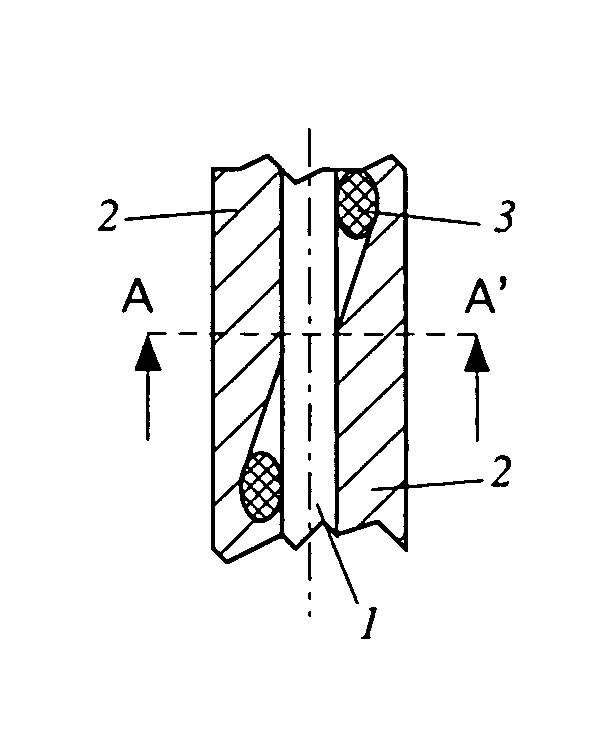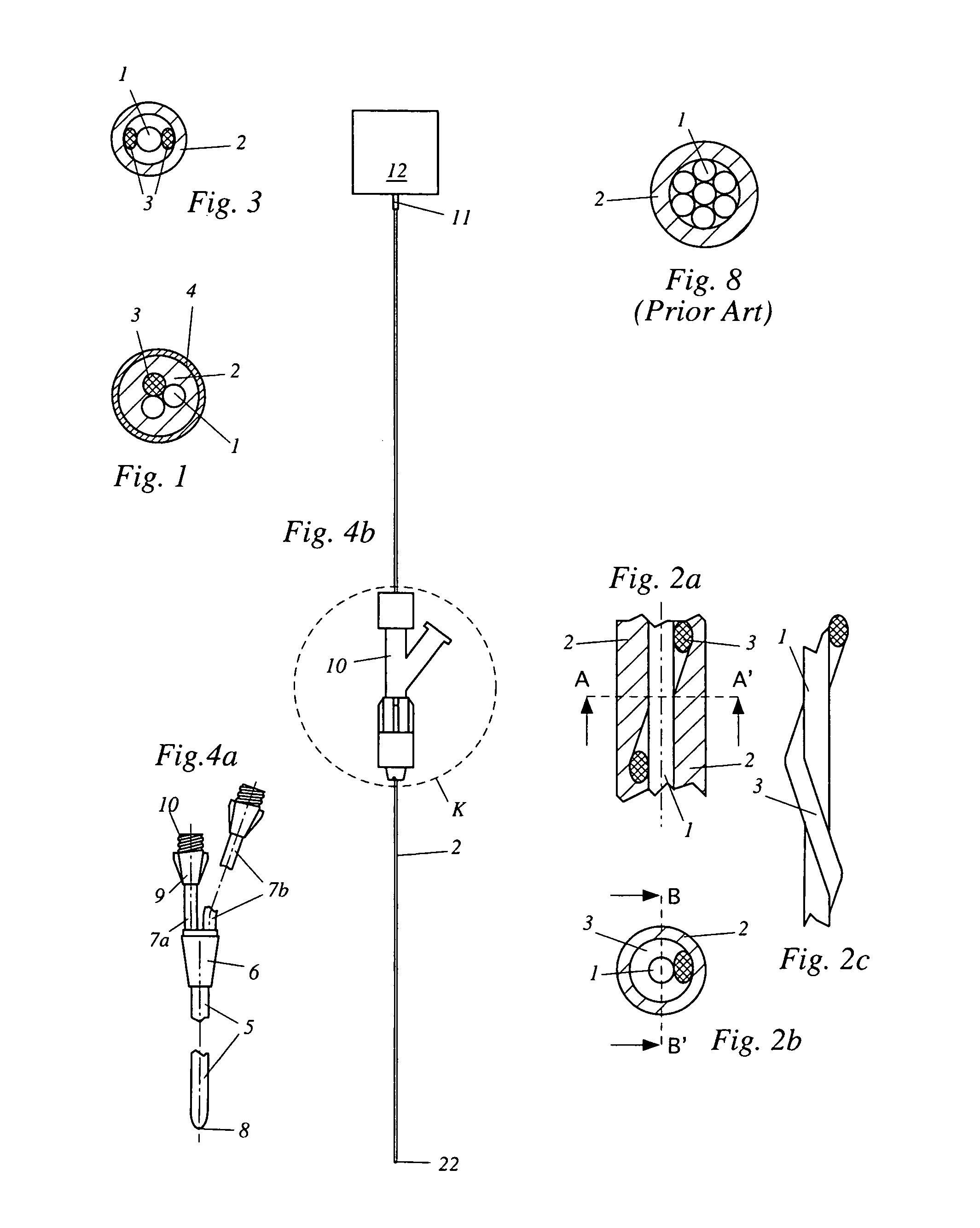Fiber-optic probe
a fiber-optic probe and optical fiber technology, applied in the field of fiber-optic probes, can solve the problem of low kink resistan
- Summary
- Abstract
- Description
- Claims
- Application Information
AI Technical Summary
Benefits of technology
Problems solved by technology
Method used
Image
Examples
Embodiment Construction
[0048]The conventional probe shown in FIG. 8 has a fiber-optical bundle constituting the fiber-optical core 1. The core comprises both efferent fibers for guiding light from a light source (not shown) to the distal tip of the probe and afferent fibers for guiding reflected, scattered or fluorescent light from the distal tip of the probe to detecting means (not shown) connected with the probe. The core 1 is protected by a sheath 2. Due to the rather large probe diameter, kinking resistance is acceptable.
[0049]FIG. 1 shows a small diameter probe according to the present invention wherein the fiber-optical core 1 comprises only two fibers. A reinforcement fiber 3 improves stiffness, kink resistance and overall strength of the probe. The reinforcement fiber 3 is arranged essentially parallel to the core fibers 1. The outside of the sheath 2 is coated with an antithrombogenic coating 4 for reducing the danger of clots forming at the surface. The coating 4 may be comprised, for example, o...
PUM
 Login to View More
Login to View More Abstract
Description
Claims
Application Information
 Login to View More
Login to View More - R&D
- Intellectual Property
- Life Sciences
- Materials
- Tech Scout
- Unparalleled Data Quality
- Higher Quality Content
- 60% Fewer Hallucinations
Browse by: Latest US Patents, China's latest patents, Technical Efficacy Thesaurus, Application Domain, Technology Topic, Popular Technical Reports.
© 2025 PatSnap. All rights reserved.Legal|Privacy policy|Modern Slavery Act Transparency Statement|Sitemap|About US| Contact US: help@patsnap.com



